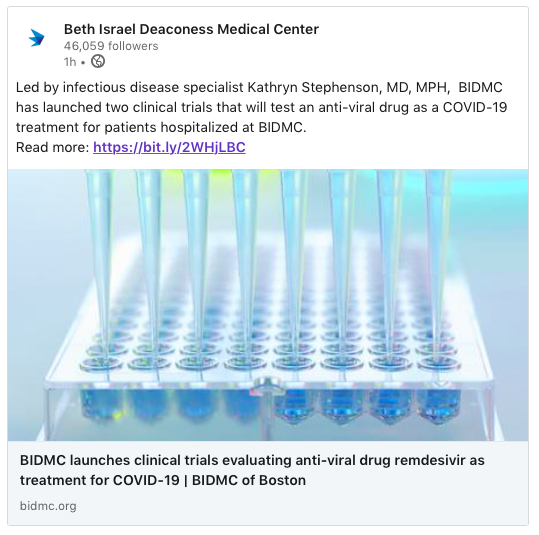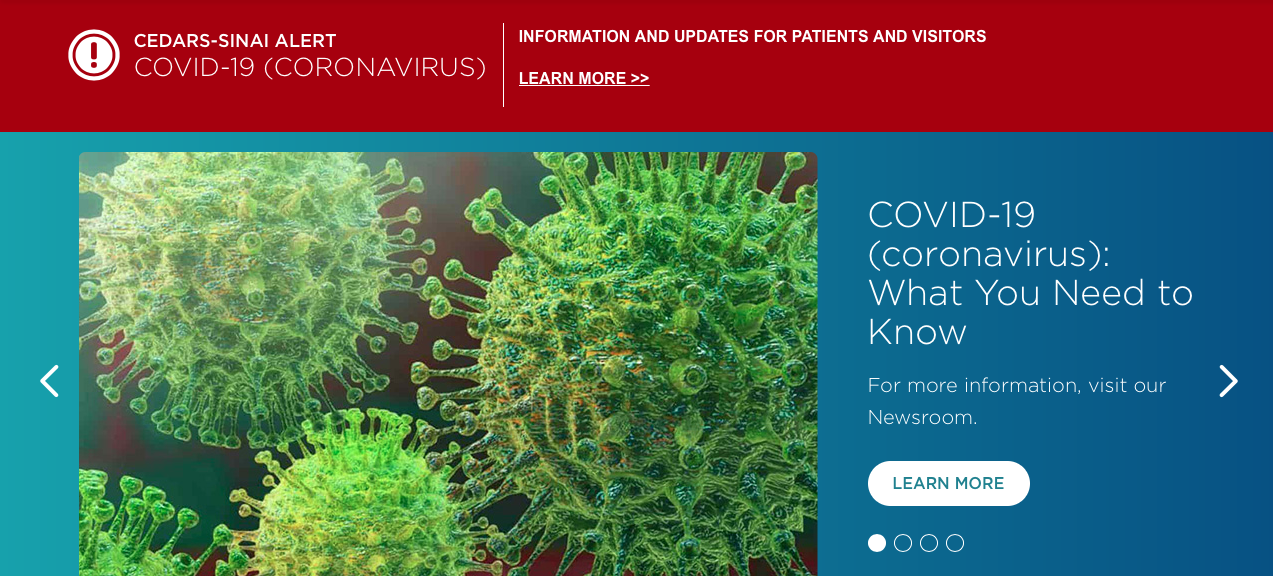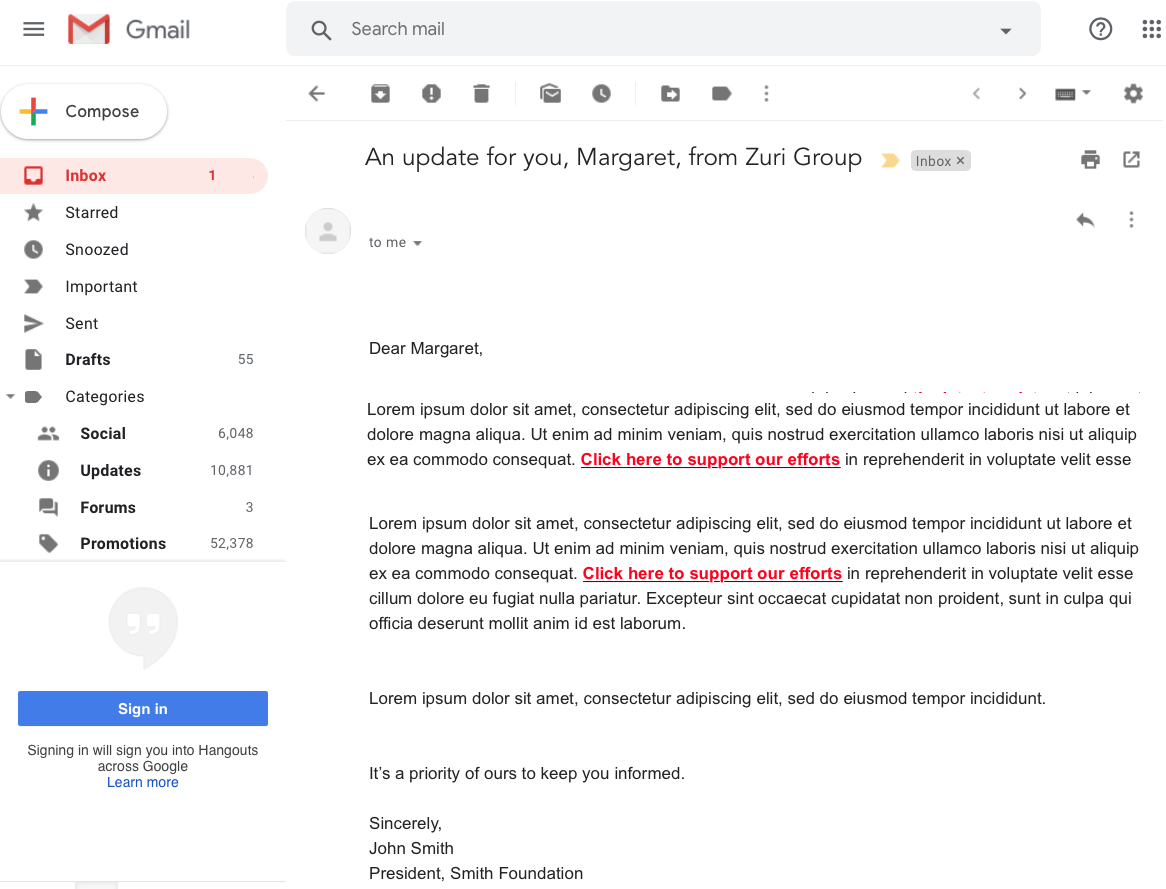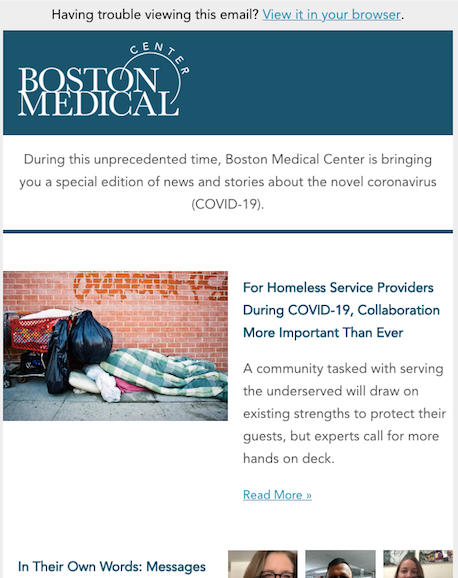
Communities across the globe are looking to healthcare providers for answers to a myriad of questions. When will this pandemic be over? Do we have a vaccine? How do we get access to more tests? The search for answers seems endless.
It goes without saying that our healthcare systems, and particularly our hospitals, are in the spotlight right now. As a healthcare provider, how can you shift the way you engage with supporters to emphasize urgency and show compassion? That’s a big ask for organizations to carry out, but it is crucial for striking the balance between medical necessity and social comfort within your messaging. The following tips will help you communicate with your audience by reflecting your sympathy, knowledge, and support during these times of uncertainty. With the right strategies in place, you can easily encourage your community to support your mission in return.
Messaging
Communication is key during times like this.
Assure your community that you are ready and prepared for both the current situation and what is to come. Immediate, short, and frequent outreach can calm the nerves within your community and make space for your organization to be a go-to source for reliable facts and updates.
Your team is part of the solution. Your supporters are too.
Your organization is known for achieving medical breakthroughs, but under such urgent timing these are nothing short of miracles. Continue to publicize medical updates and milestones related to the pandemic. Your supporters will appreciate your effort to share your expertise!

Website
Make space for alerts and update the information often.
Dedicate a segment of your homepage as a space for alerts, news updates, and quick information that viewers can absorb at a glance. Communicate with viewers that your organization is “in the know” and is actively working to provide resources to help them stay up-to-date with both local and global news.


Reassure your supporters that you are working hard to fight this.
Send personal, timely emails from the President or Chief Development Officer. Using messaging that includes “an update from the desk of…” provides a comforting, personal connection between supporters and your organization.
Once your initial message is delivered, continue sending updates on a regular basis. Consistent communication is essential during this time, and email is a great way to engage with your audience.
Include personal touches within your mass emails.
Consider swapping image-heavy email templates with simple layouts to provide a more personal connection.
Another strategy is to create an HTML email layout that mimics something more personal like Gmail or Outlook. You can even personalize the subject line with, “An Update For You, Margaret.” Here’s an example of what that could look like.

Special Edition Newsletter
Create a special edition newsletter using your standard layout with COVID-19 information, and distribute it to your mailing list. Here’s a great example from Boston Medical Center that brought some comfort to our inbox.

Giving During a Crisis
Donor-Designated Giving
Provide supporters with the option to donate to particular departments. Creating specific designations not only gives your donors more input on what their contribution will go toward, but also allows you to better understand your constituents. You may find that most of your donors are contributing to support for your physicians, in which case you may consider expanding your Grateful Patient program. Here are some example designations you might use:
- Support our physicians
- Specific COVID-19 related funds (i.e vaccines)
- Where needed most
Areas of Impact
Creating impact messages that correlate with specific gift amounts is a great way to connect with supporters and encourage them to feel good about their contribution. Your donors are critical to your mission—let them know exactly how they are helping! Here are some examples of impact messages that you can easily implement in your messaging:
- $100 supports our blood drive during this critical shortage of blood supply
- $500 provides us with 1 million masks
- $2,500 provides an additional hospital bed for our ICU
- $5,000 supports our travel nurses program by providing more healthcare workers during this vital time
Peer-to-Peer and Crowdfunding
Grateful Patient program
Expand your Grateful Patient program and stress the urgency to fundraise. Your patients are appreciative of the care you’ve provided them in the past, and chances are they want to help you succeed. Encourage their support by tapping into your patients’ social networks and providing fundraising tips to your peer-to-peer (P2P) groups.
Crowdfunding
Include a giving thermometer directly on your donation page to reflect a sense of urgency. When adding a live feature to a high-traffic page, it is important to ensure the technology supports a positive user experience. For example, if Susie Smith sees a donor roll on the COVID-19 emergency fund gift form, she will expect to see her name listed when she makes a contribution. Impart your recognition and appreciation of your donors while meeting their expectations.
DIY Fundraising
Now is a great time to launch a DIY fundraising program. Provide supporters with a space to create a fundraising page where they can relay messages to their community. Certain platforms will even allow supporters to embed a live stream directly onto their fundraising page, creating a great go-to space for live updates directly alongside a giving form.
While treating patients is and should be your first priority, outreach to your local community is near the top of the list. As your organization works diligently during this crisis, let your constituents know how you are combatting obstacles and what they can do to help. By connecting with your supporters via your website, an email campaign, or a special edition newsletter, your organization can express its care and compassion. And with just a few tweaks to your donor-related messaging, it’s much more likely that your constituents will reciprocate support for your cause.
Margaret is a digital strategy expert with exceptional knowledge in nonprofit management and organizational development. She is adept at helping clients with project planning, strategic campaign development, and software system selections.

